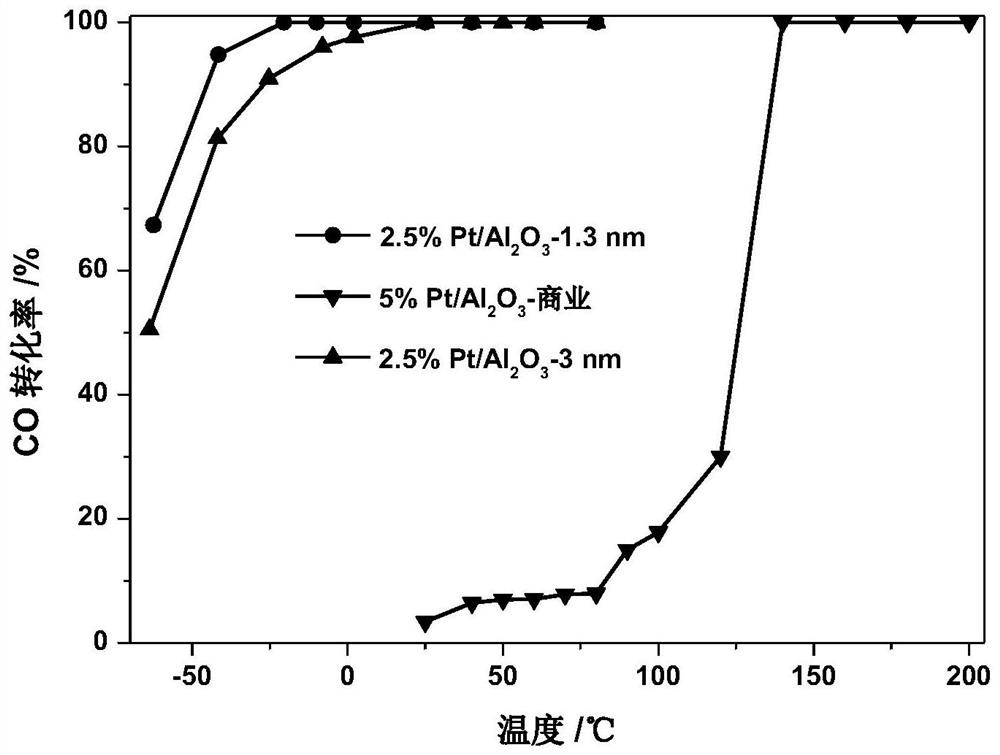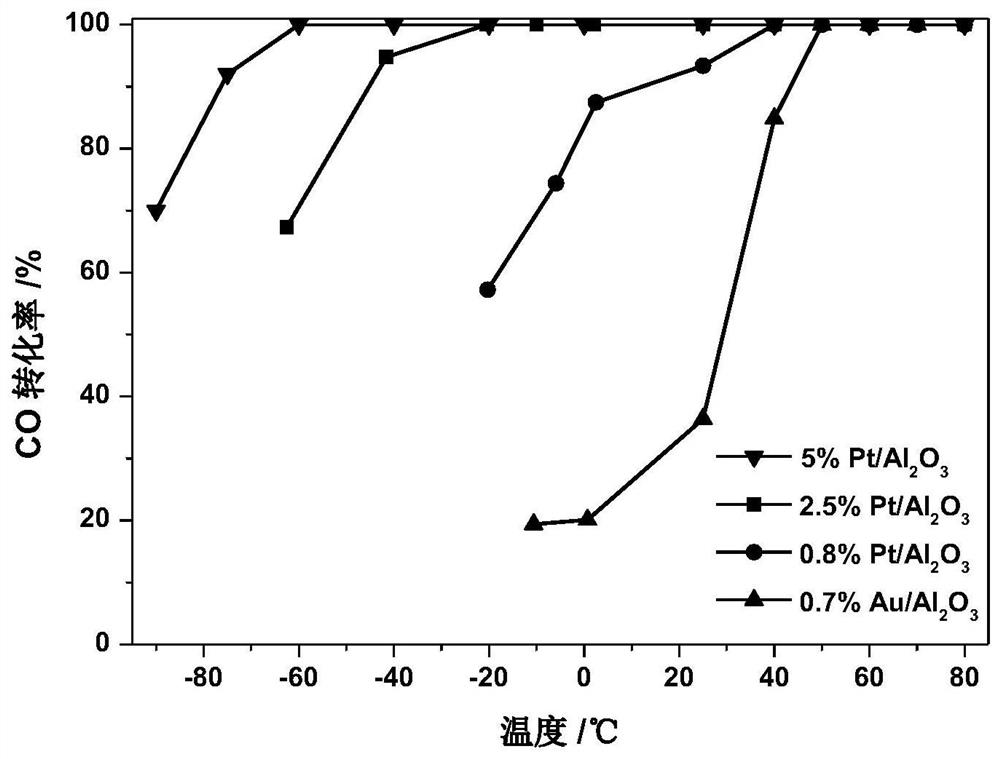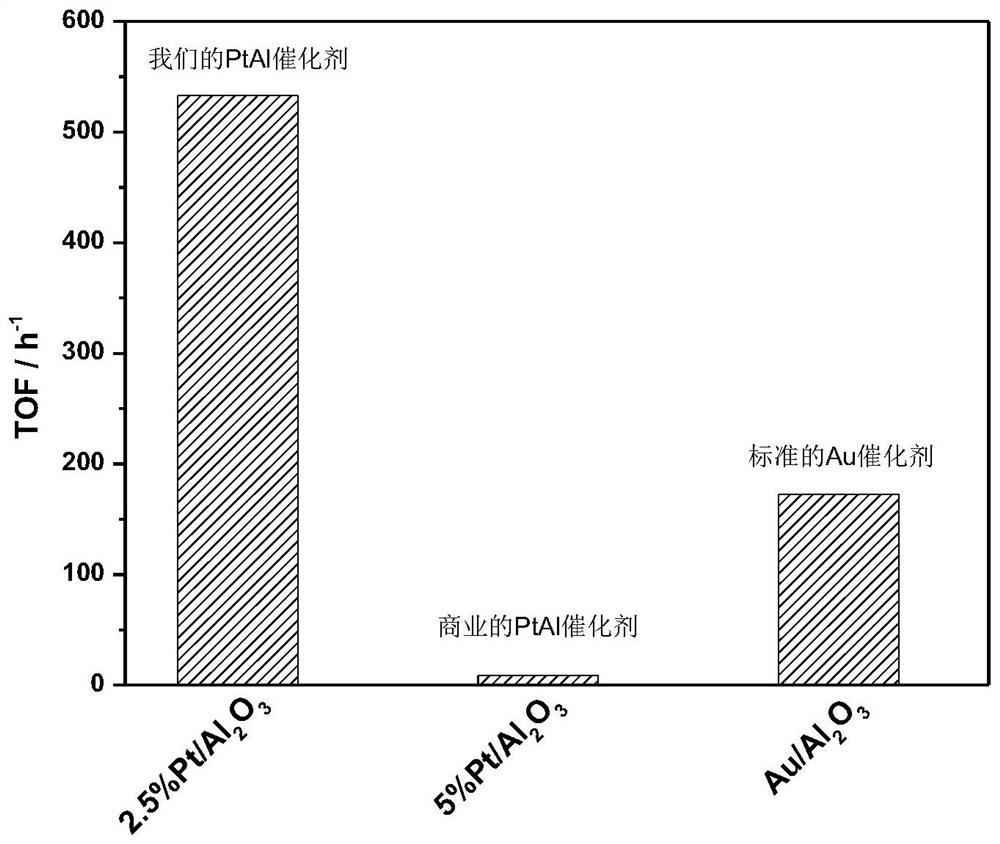Application of platinum-based catalyst for low-temperature CO oxidation or ADN decomposition
A catalyst and catalytic decomposition technology, applied in physical/chemical process catalysts, metal/metal oxide/metal hydroxide catalysts, catalyst activation/preparation, etc., can solve the problems of incomplete oxidation and poor room temperature activity, and achieve Excellent low temperature catalytic oxidation performance, good low temperature activity, good activity effect
- Summary
- Abstract
- Description
- Claims
- Application Information
AI Technical Summary
Problems solved by technology
Method used
Image
Examples
Embodiment 1
[0036] Dissolve 1g of chloroplatinic acid in 50ml of ethylene glycol solution, add it to a three-necked flask under the protection of Ar gas, and add NaOH (50ml, 0.5M) to the alcohol solution of chloroplatinic acid (1g), stir to obtain a transparent yellow Pt colloid solution, and then heated to 140 ° C for 3 hours, and the water and organic by-products in the system were taken away by Ar gas and condensed reflux. A dark brown, uniform colloidal solution of Pt clusters with a size of 0.5-1.3 nm was obtained, and the concentration of Pt in the sol was 3.7 mg / ml.
Embodiment 2
[0038] The difference from Example 1 is that the added NaOH is (50ml, 0.3M), other conditions and materials are the same as in Example 1, and the obtained Pt cluster sol has a size of 2.7±0.6nm. The test conditions of the catalyst for low-temperature CO oxidation are the same as in Example 15.
Embodiment 3
[0040] The difference from Example 1 is that the heating temperature is 160° C., the mass of chloroplatinic acid is 0.27 g, other conditions and materials are the same as in Example 1, and the obtained Pt cluster sol has a size of 0.5±0.3 nm.
PUM
 Login to View More
Login to View More Abstract
Description
Claims
Application Information
 Login to View More
Login to View More - R&D
- Intellectual Property
- Life Sciences
- Materials
- Tech Scout
- Unparalleled Data Quality
- Higher Quality Content
- 60% Fewer Hallucinations
Browse by: Latest US Patents, China's latest patents, Technical Efficacy Thesaurus, Application Domain, Technology Topic, Popular Technical Reports.
© 2025 PatSnap. All rights reserved.Legal|Privacy policy|Modern Slavery Act Transparency Statement|Sitemap|About US| Contact US: help@patsnap.com



